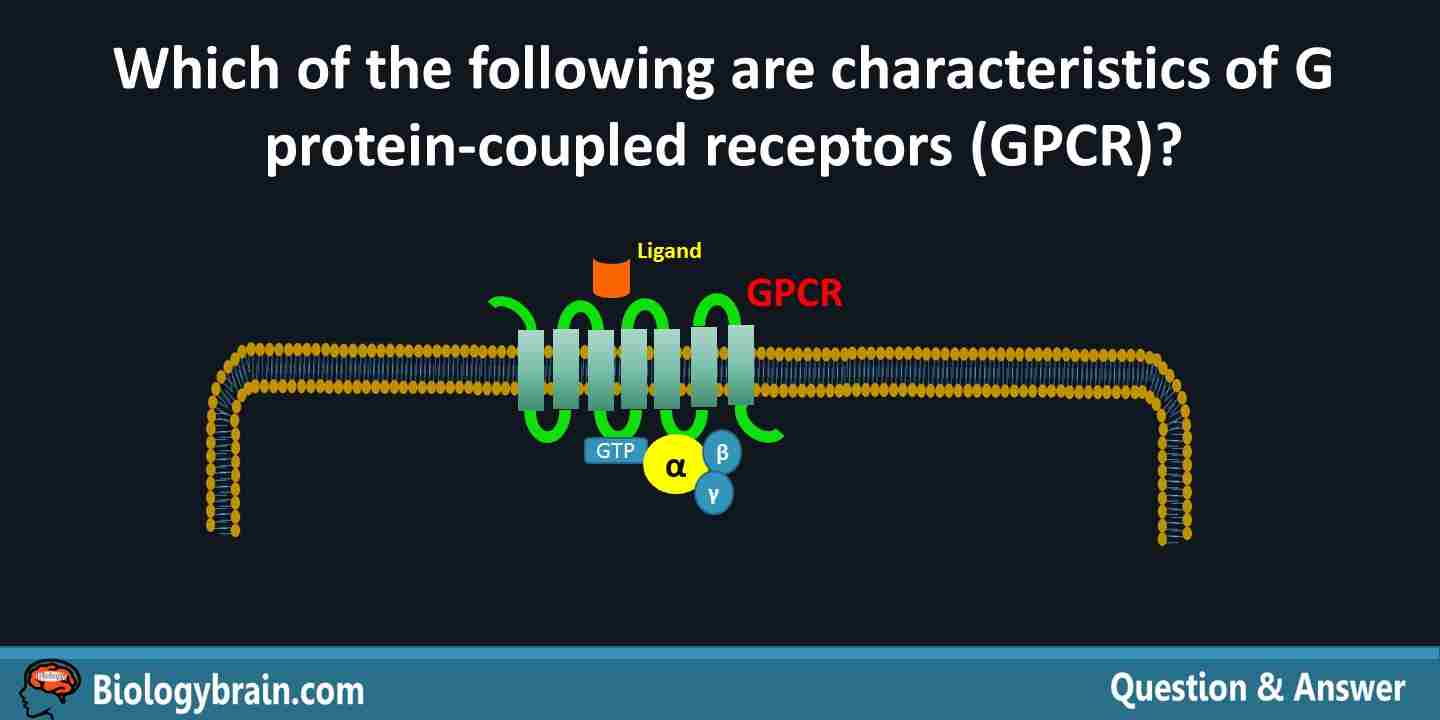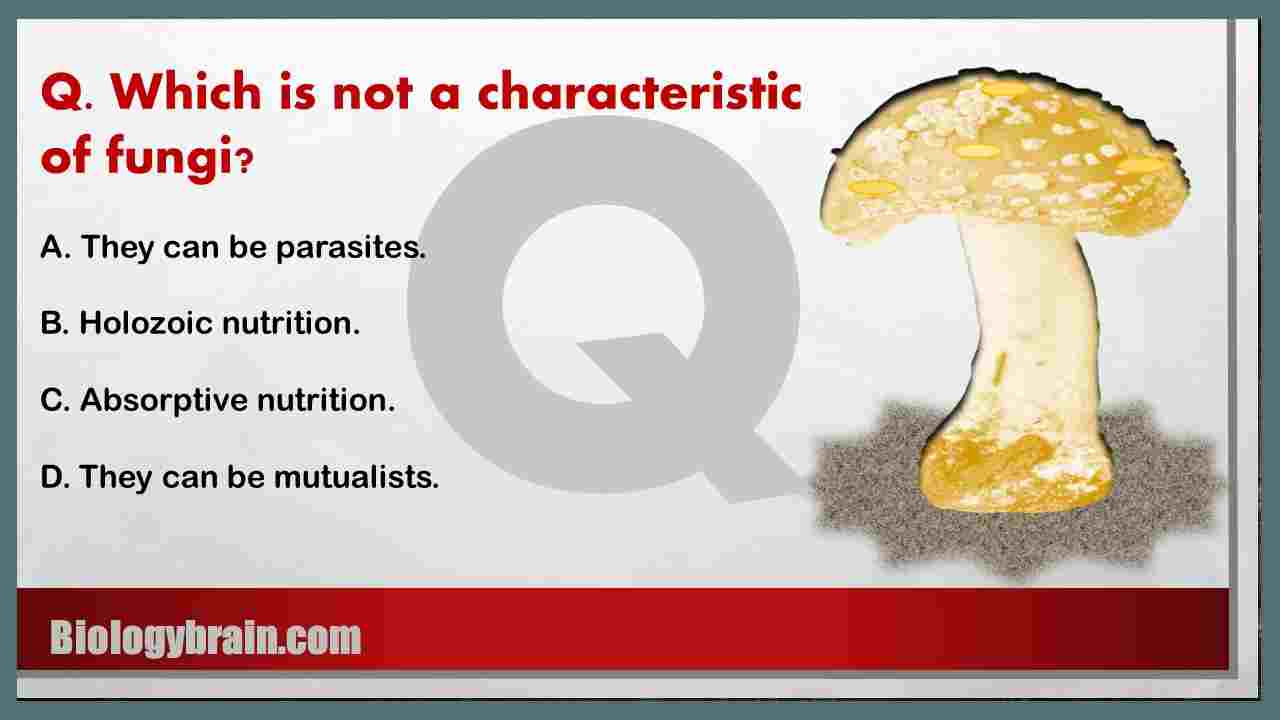Q. Which of the following are characteristics of G protein-coupled receptors (GPCR)?
1. The receptor region is located on the extracellular portion of the protein.
2. GPCRs contain seven transmembrane domains that are embedded in the cell membrane.
3. They carry hydrophilic portions of protein that extend into the extracellular matrix as well as the cytosol.
4. G proteins are required for their function.
A. 1, 2, and 4 are characteristics of G protein-coupled receptors.
B. 1, 2, and 3 are characteristics of G protein-coupled receptors.
C. Only 1 and 2 are characteristics of G protein-coupled receptors.
D. All of the listed statements are characteristics of G protein-coupled receptors.

Answer: D (All of the listed statements are characteristics of G protein-coupled receptors).
Explanation: GPCR contains seven hydrophobic transmembrane helices A, B, C, D, E, F, and G, which are interconnected by hydrophilic extramembrane loops. The protein part (receptor region) located on the extracellular portion of the cell membrane binds with the ligand and transmits signals from this ligand to an intracellular molecule called a G protein (Guanine nucleotide-binding protein).
Hence, all the given options about G protein-coupled receptors are correct.
Read more about GPCR and its types.
Other important questions:
Q. The alpha-helix and beta-sheet are found at which level of protein organization?
Q. Which cytoskeletal proteins provide the structural support for microvilli?
Q. Which of these does not contain a structural protein?
Q. What level of protein structure is associated with the sequence of amino acids?
Q. Which of the following pertains to typhoid fever?
Q. Which of the following tests is an agglutination test for the bacterium causing typhoid fever?
Q. This is a compound made from a group of covalently bonded atoms?
Q. If two covalently bonded atoms are identical the bond is ?










